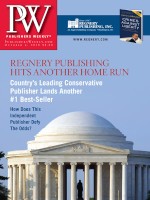A Bowker PubTrack Consumer analysis of second-quarter market trends shows declines in the price paid per book, number of books purchased per buyer, and in the overall dollars spent per buyer. The drops came in comparisons both to the first quarter of 2010 as well as the second quarter of 2009. Sales include e-books and print books across all categories and occurs as digital books take a larger slice of overall book sales. According to PubTrack, digital sales accounted for 3.2% of unit purchases in the second quarter, up from 2.5% in the first period and from 1.9% in the 2009 second period. At the same time, hardcovers' share of the market fell to 33.3%, down from 35.0% in the comparable period in 2009.
Industry analysts expected that lower-priced e-books would lead to consumers paying lower prices per book and the slight shift away from hardcovers to e-books seems to be having just such an impact. Analysts also expected that with lower prices, unit sales would increase, but that does not appear to be the case as books per buyer dipped from 2.7 in last year's second quarter to 2.4 in this year's second quarter. Despite the availability of cheaper e-books, the still sluggish economy is a likely major factor in dropping the number of books bought by readers.
While overall buying fell, there were differences among categories. In fiction, while books per buyer declined on a year-to-year comparison, there was a slight increase between the beginning of the year and the second quarter, and, since fiction is a large component of e-books, indicates that fiction buyers in 2010 are starting to buy more e-books. In fact, e-book sales represented 5.0% of unit fiction sales in the second quarter, up from 3.5% in the first quarter, while e-books' share of dollars rose to 3.6% from 2.4%. In the other major trade segments—nonfiction and juvenile, where e-books have less impact—the number of books purchased per buyer was down slightly in the year-to-year comparison as well as since the beginning of 2010. In nonfiction, e-book sales accounted for 1.9% of unit sales in the second quarter, down from 2.0% in the first period; e-books' take of spending on nonfiction rose to 1.3% from 1.0%.
The impact of digital sales is also seen in gradual shifts in sales by channel. The annual and quarterly increase in sales from all other outlets is attributed to higher e-book and audio downloads. The growth in e-book sales has no doubt helped Amazon increase its share of consumers' book dollars, with Amazon capturing 18% of spending, up from 16% from one year ago. Barnes & Noble lost one percentage point over the year, and Borders's share fell by two percentage points, while independents' share rose from 4% to 5%. The long-awaited decline in book club sales may finally be happening as the PubTrack data found that channel's share of spending falling to 6% of total spending from 10% in the first quarter.



 Volume 257
Issue 39
10/04/2010
Volume 257
Issue 39
10/04/2010





